Bees Swarming?
Identify Different Bees And Their Behaviors: Honey Bees, Bumblebees, Carpenter Bees, Wasps, And Hornets. Learn About Swarming And Nesting.
Need Help? Give Us A Call!
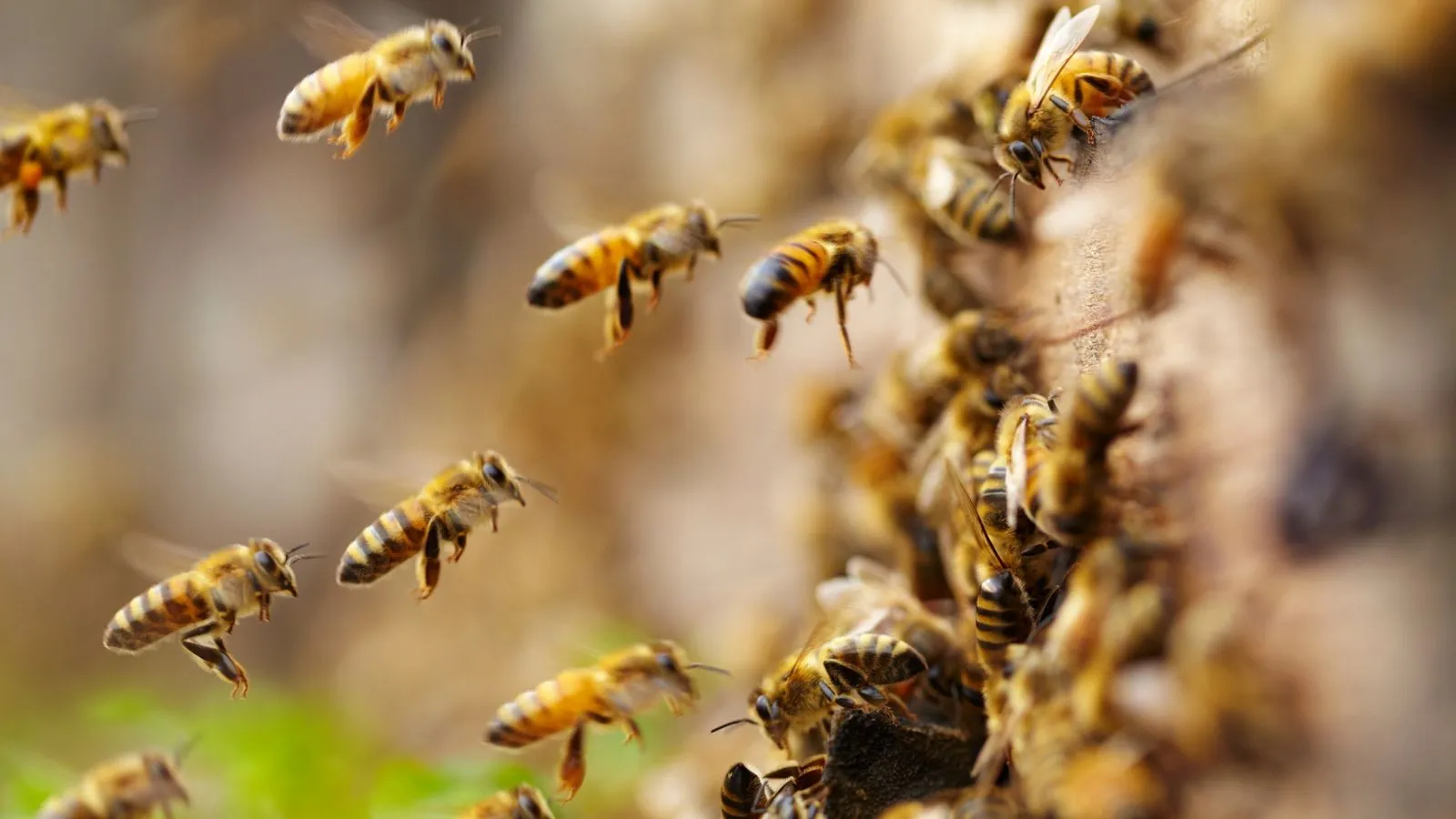
1. Identify What You Are Seeing
- Honey Bees: Typically golden-brown with black stripes. They are social and live in large colonies. Honey bee swarms are often seen in spring or early summer.
- Bumblebees: Larger, with fuzzy bodies and a distinctive black and yellow pattern. They are less aggressive and usually nest in the ground or in cavities.
- Carpenter Bees: Resemble bumblebees but have a shiny, black abdomen. They bore into wood to create nests.
- Wasps and Hornets: These are not bees but are often mistaken for them. Wasps have slender bodies and smooth, shiny skin. Hornets are larger and more aggressive.
2. Assess the Situation
- Swarming Behavior: Swarms are generally non-aggressive as bees are searching for a new home. This behavior is common in honey bees and typically occurs in the spring.
- Nesting: If bees are actively entering and exiting a specific area, they may have established a nest.
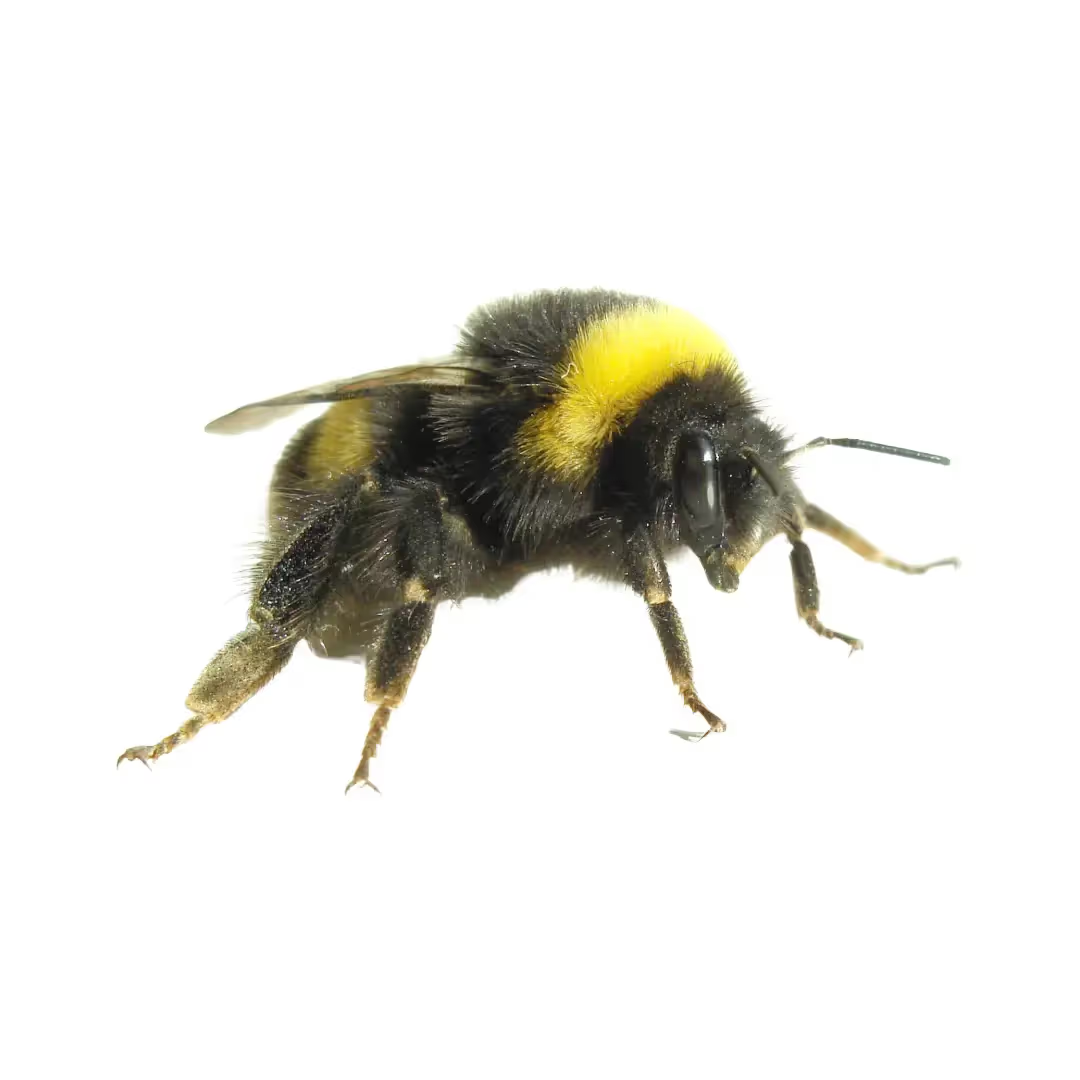
Bumble Bees
Pest Details
Color:
Black with yellow stripes.
Size:
1/2-1" inch long
Legs:
6
Shape:
Large Round & Fuzzy
Pest Habits & Characteristics
Image Attribute
Trounce, CC BY-SA 2.5 <https://creativecommons.org/licenses/by-sa/2.5>, via Wikimedia Commons
Preparation For Service
N/A

Carpenter Bees
Pest Details
Color:
golden-yellow with brown bands
Size:
1/2" inch long
Legs:
6
Shape:
Oval
Pest Habits & Characteristics
Image Attribute
Carpenter Bee Photo Edited, Original Image - Insects Unlocked, CC0, via Wikimedia Commons
Preparation For Service
Inform the pest control professional of any specific areas where bees have been seen.
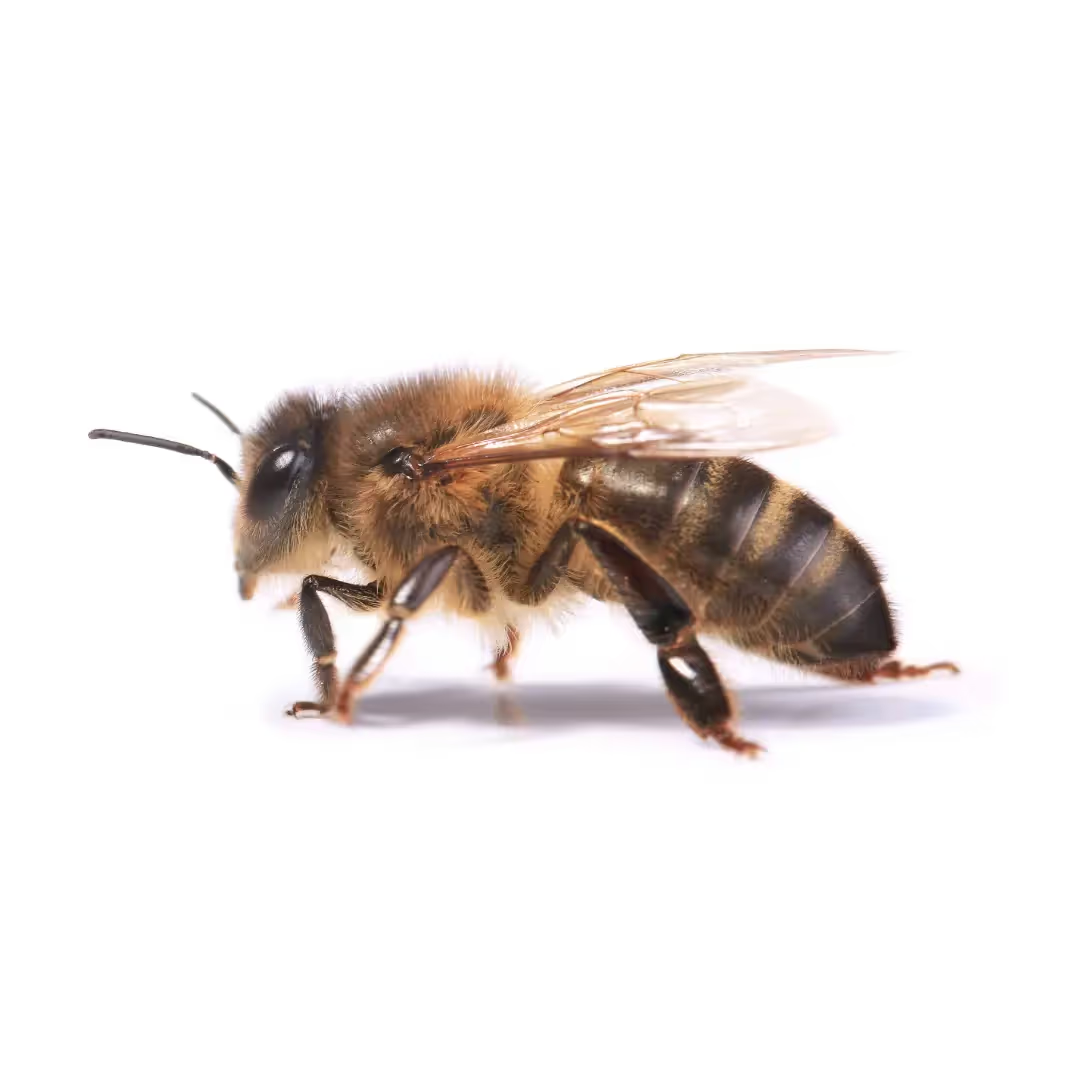
European Honey Bees
Pest Details
Color:
Golden-brown body with black bands; covered in fine yellowish hairs that give a fuzzy appearance.
Size:
Approximately ½ inch (12–15 mm) long. Queens are larger, up to 20 mm.
Legs:
Six legs, adapted for gathering pollen with special pollen baskets on the hind legs.
Shape:
Oval, segmented body with distinct head, thorax, and abdomen. The waist is slightly narrow; wings are clear and extend beyond the abdomen.
Pest Habits & Characteristics
Common signs of infestation:
- Groups of bees entering and exiting a small hole or gap in siding, roofs, or walls
- Persistent buzzing sounds within a wall or ceiling
- Honey or wax residue seeping through walls or ceilings
- Increased bee activity around flowering plants or water sources
Image Attribute
European Honey Bee
Preparation For Service
Preparation for service:
- Do not attempt to seal the entry hole or spray chemicals yourself; this can drive bees deeper into the structure.
- Keep children and pets away from the area.
- Note the times of day when bee activity is highest and inform the technician.
- If honeycomb is inside a structure, be prepared for possible wall opening and removal to prevent future infestations or odors from decaying honey.
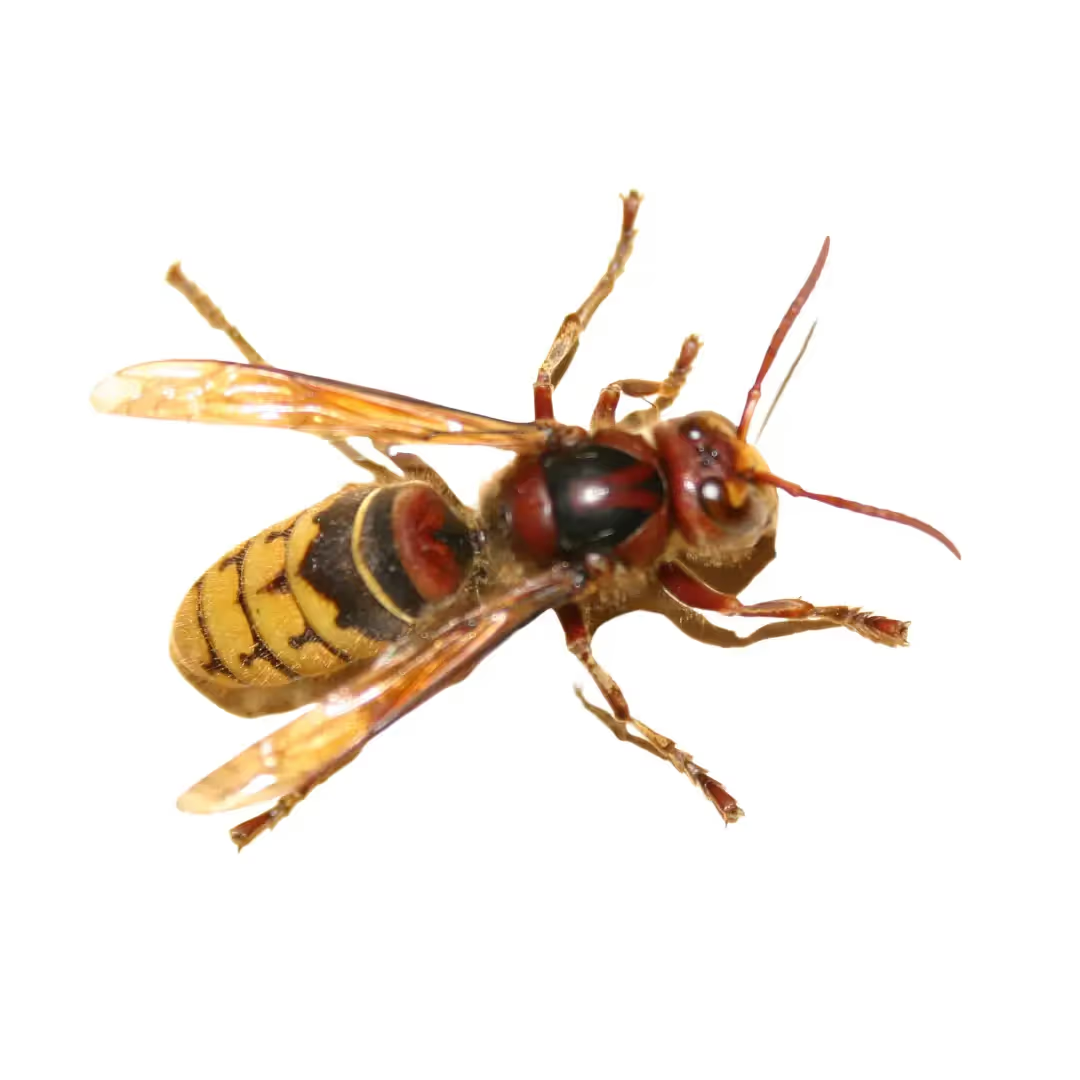
European Hornet
Pest Details
Color:
Brown/muted grey with muted yellow stripes and a pale face.
Size:
1-1.5" inches long
Legs:
6
Shape:
Long and robust body with a narrow waist and large head.
Pest Habits & Characteristics
Image Attribute
Sven Teschke, CC BY-SA 3.0 <http://creativecommons.org/licenses/by-sa/3.0/>, via Wikimedia Commons
Preparation For Service

Paper Wasp
Pest Details
Color:
Yellow with black stripes.
Size:
3/4" to 1" Inch Long.
Legs:
6
Shape:
Slender body with a narrow waist and long legs that dangle in flight.
Pest Habits & Characteristics
Image Attribute
Alvesgaspar, CC BY-SA 3.0 <https://creativecommons.org/licenses/by-sa/3.0>, via Wikimedia Commons
Preparation For Service
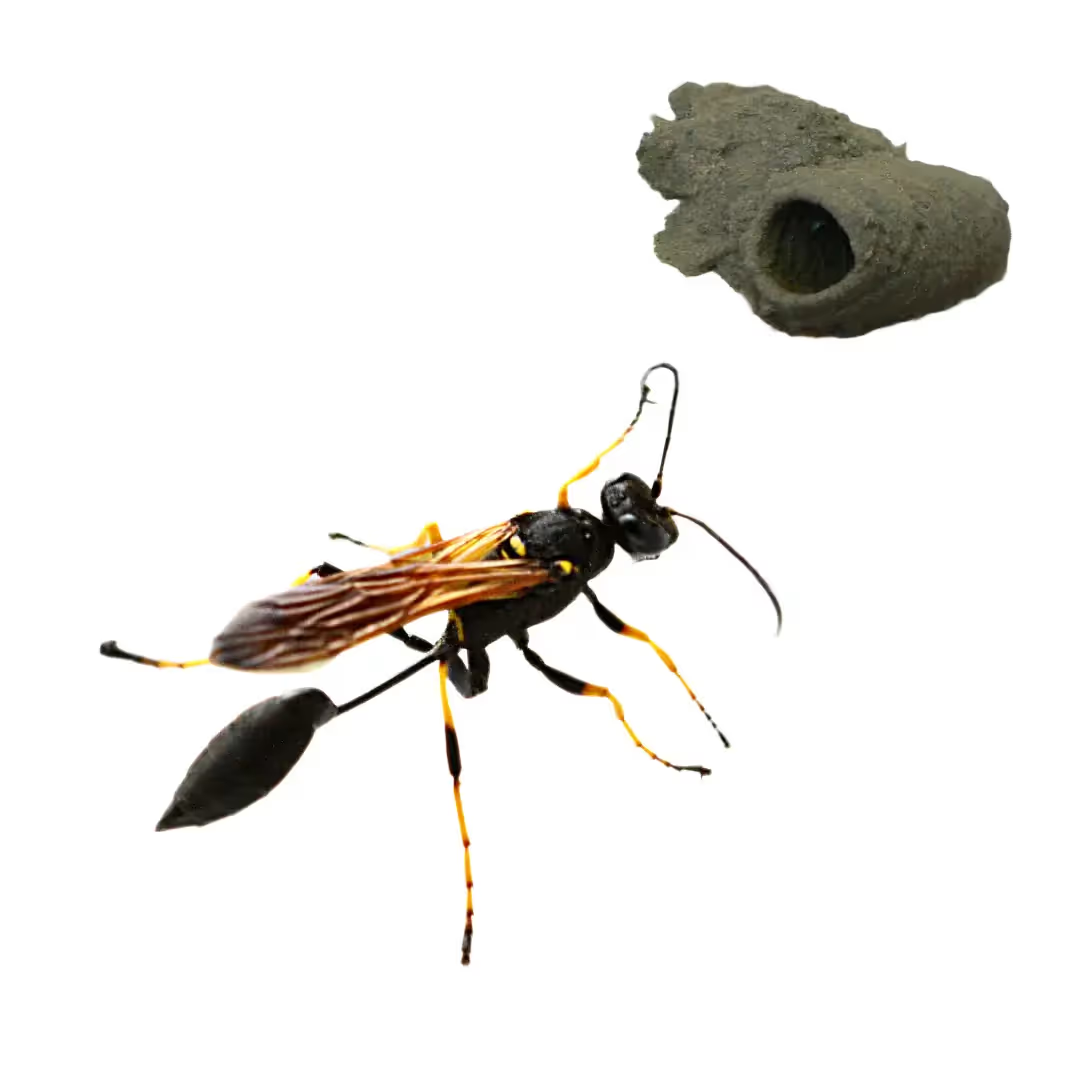
Mud Dauber Wasp
Pest Details
Color:
Black with a metallic blue or green sheen.
Size:
1/2" to 1" Inch Long.
Legs:
6
Shape:
Slender body with a long, narrow waist and elongated abdomen.
Pest Habits & Characteristics
Image Attribute
Keenan Pepper, CC BY-SA 2.0 <https://creativecommons.org/licenses/by-sa/2.0>, via Wikimedia Commons & Ryan Hodnett, CC BY-SA 4.0 <https://creativecommons.org/licenses/by-sa/4.0>, via Wikimedia Commons combined
Preparation For Service
